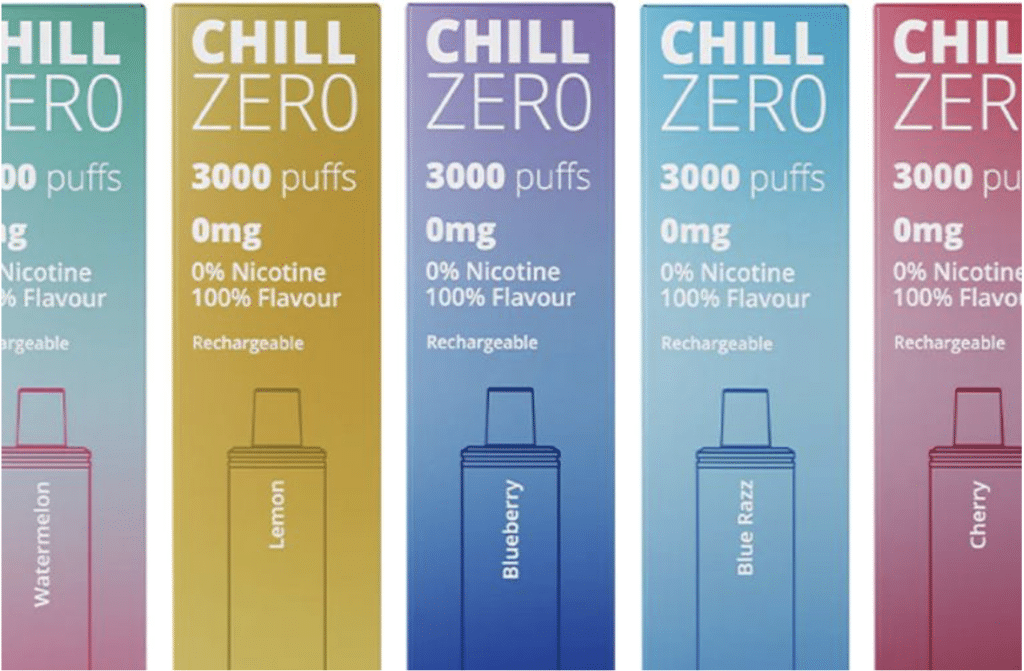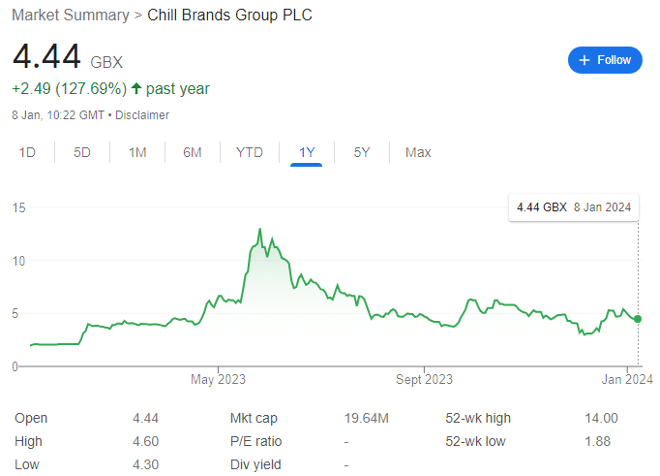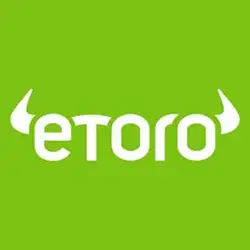Chill Brands is growing exponentially — and the story is just getting started. Here’s what you need to know.

Chill Brands (LON: CHLL) is perhaps one of the most marmite stocks on the small cap market — investors who are in, really like the stock, and those who disagree with the investment thesis are fairly vocal in their opinions.
In a market where shareholders tend to be fairly outspoken anyway, this is some achievement — and is therefore worth an in-depth factual evaluation. Chill shares have more than doubled over the past year to 4.44p per share but have also fallen by circa two-thirds since hitting 13.05p in May 2023. This volatile performance is likely behind some of the divided investor positions, but the markets are ever forward-looking.

The key question is this: where next?
Let’s dive in.
Chill Brands: start with the product
When I cover ‘new tech’ shares — think Ondo Insurtech, Cizzle, Abingdon Health, OptiBiotix et al — my first question is always about the product. It needs to occupy a specific industry niche which is large enough to grow but also is actually worth making.
Ondo’s LeakBot, Cizzle’s lung test, Abingdon’s saliva pregnancy test, and Opti’s dietary ‘sugar’ fibres all meet this qualification with ease; at the end of the day, it’s the product that makes the company.
So to basics — Chill is a FMCG (fast-moving consumer goods) company which nowadays focuses on vape products, with a large distribution network through the UK and increasingly, the US — alongside its own e-commerce site Chill.com. It’s worth noting that the Chill site involves a marketplace of third-party products, from which the company makes a commission without the inventory risk (in other words, a risk-free revenue stream, excluding site costs).
The business model is actually quite simple: the company distributes ‘highly differentiated’ tobacco alternatives and ‘wellness’ products — of which there are many, including energy gum, deodorant, and even sexual wellness products — but the key products are the nicotine-free vapes, made under the CHILL ZERO brand. These are TPD-compliant (EU safety rules for sale/manufacture of e-cigarettes and e-vapes), and also come with a high puff count.
Not a vaper? Me neither, but the puff count is essentially how long a vape lasts for; you can get 3,000 puffs for £12.99 on the Chill site — this compares to a typical ELF Vape at 600 puffs or VUSE vape at 700 puffs for £5.99 apiece. This makes Chill disposable vapes more than twice as cheap to buy compared to competitors — and this is a factor that makes a huge difference to the investment case.
There’s also the brand name — Chill. Chinese tat, alongside most major brands, have very little connotations, but Chill isn’t some random word on the side of some packaging — it’s a marketable brand name.
So in summary: zero nicotine, extremely good value for customers, and well branded. So far, so good. Zero nicotine vapes will appeal to those trying to reduce the nicotine intake, as well as many who want to enjoy the social aspects or even flavour of vapes without the addictive component.
The Chill growth strategy
The following is a breakdown of everything Chill’s been up to for the past few months — and is a bit of a read. It’s probably worth starting on 9 October — when the company announced it was entering an initial 150 WHSmith travel shops with Chill Zero vapes, at high traffic locations — which benefit from 500,000 passengers a day.
Simultaneously, the company updated investors that it had secured £350,000 of orders from UK retailers since launching Chill ZERO the month before — including to 200 independent shops, facilitated through The Vaping Group and Phoenix 2 Retail. CEO Callum Sommerton described the step as a ‘significant milestone.’
Then on 12 October, Chill launched its zero-nicotine vapes on Amazon.co.uk (the world’s largest e-commerce retailer). Importantly, Amazon does not allow the sale of nicotine vapes on its site, so there is a significant competitive edge — and Sommerton plans to expand the company’s Amazon presence to other countries in time. For context, since the Amazon launch, Chill has ‘outperformed expectations and gained first page rankings for ‘key search terms including “nicotine free vape.”’
This is not easy to do.
Then on 9 November, Chill ZERO began to be sold on Vape Local — a leading wholesale retailer with access to a network of 4,000+ retail store accounts — massively increasing the brand’s exposure.
This step was compounded on 17 November, when Chill received its first order from Flawless, the UK’s ‘largest category-specific retailer,’ which supplies 5,000 wholesale accounts and 50,000+ customers. In the words of the CEO, this ‘dominant force’ in the UK vaping industry is a another ‘vote of confidence’ in Chill’s prospects.
Then on 7 December, investors enjoyed a broader trading update, which demonstrated strong growth. To start with, expansionary work in the US had come to fruition, with Smoker Friendly (the largest dedicated smoke shop chain in the country) making an initial purchase order for 60 shops after Chill’s pilot into Colorado, Arizona, Florida and Texas.
The Smoker Friendly shops will stock Chill products within Colorado, Wyoming, Montana, North Carolina, Florida, Missouri, Arkansas, Tennessee, and Indiana. Smoker Friendly vapour category director Sean Musgrave is on record as ‘excited to work with Chill Brands and looking forward to trialling the Chill ZERO products. We are seeing demand grow with respect to nicotine-free vape products. Our customers are looking for a product that has no nicotine, yet still delivers the satisfaction of vaping, and I feel that Chill ZERO can satisfy that request.’
Further, Chill announced it had grown its UK market offering to 475 independent shops — remember this was only 200 shops three months before — and this included franchised branches of Nisa Local, Spar and Premier. The company also noted that after four months of sales data, it was observing a ‘positive trend in reorder rates from independent retailers’ with shops reordering roughly two months after their first purchase on average.
In addition, Chill Zero is now on various e-commerce sites including oceanvape.co.uk, totally-vapour.co.uk, and royalvapes.co.uk. And the Chill.com marketplace had grown to 44 external brands — with plans to engage in significant marketing through 2024 to drive traffic to the site. It’s worth noting that Googling ‘Chill’ brings the site in at the top three spot.
Then on 20 December (when most of us had started to switch off for Christmas), the company announced it had secured a ‘substantial initial purchase order’ for Chill Zero vapes into a ‘leading supermarket chain.’ Later announced as Morrisons (this makes sense given the supermarket’s Amazon Prime tie-up and private equity ownership), the vapes will enter shops this quarter — which would at that point have increased selling locations to 2,100 UK shops — having received gross sales and purchase orders of £1.85 million since Chill Zero’s launch at the start of August 2023.
It’s also worth noting that Jonathan Swann — 6.55% shareholder, and similarly invested in several other promising companies — had allowed Chill access to a £1 million supply chain debt financing facility, with a monthly interest rate of 2% on funds drawn with a term of one year.
Given that my ten year old could find a guaranteed 5% return on a retail savings account, this is a strong vote of investor confidence. But as the funds will be used to acquire inventory and roll out products, you could argue that Chill — like many fast growing companies — is now becoming a victim of its own success.
But no matter. On 22 December, Chill announced the sale of its vape products to ‘a prominent operator of UK petrol stations, trading under major brands including Shell, Esso and BP.’ Another ‘substantial’ purchase order, the company will see its vapes roll out into 265 forecourt convenience shops — increasing retail locations to 2,365 shops across the UK and sending combined gross sales and purchase orders to in excess of £2.1 million.
Once again, it’s worth repeating that Chill had only entered 200 independent shops in August September 2023 — and now expects its Chill Zero products to be on the shop floor at Morrisons, WHSmith travel locations, and the various petrol station forecourts in January 2024.
| BROKER | PROS | FEATURES |
|---|---|---|
 | + Founded in 1974 + First-class web trading platform + Superb educational tools + Great deposit and withdrawal options | Fees: Spread cost; Overnight financing costs; Inactivity fees Min. Deposit: $£250 Tradeable Symbols: 19537 |
Spread bets and CFDs are complex instruments and come with a high risk of losing money rapidly due to leverage. 69% of retail investor accounts lose money when trading spread bets and CFDs with this provider. You should consider whether you understand how spread bets and CFDs work, and whether you can afford to take the high risk of losing your money. |
||
 | + Fast withdrawal + 0% commission on US stocks + Real Cryptos, Stocks + Copytrading + Social Trading + PayPal deposits possible + One Stop Shop | Fees: $5 withdrawal fee. Inactivity fee. Min. Deposit: $50 Pairs Offered: 47 Leverage: 1:30 Tradable Assets: 2000+ |
74% of retail investor accounts lose money when trading CFDs with this provider. You should consider whether you can afford to take the high risk of losing your money. |
||
Legislation analysis
Chill is very aware that it operates in a space where future legislation could impact on its business model. However, much of the risk is overblown in my view, and where the risks exist, the company has taken steps to mitigate them.
Specifically, at its AGM in September, it noted that ‘that regulatory authorities are considering how to effectively balance the positive impact of vaping as a harm reduction tool with the need to protect children and the environment.’ This is a better approach than simply ignoring the regulatory risk.
On 3 January, it announced steps to ensure future product viability including participation in a large-scale recycling scheme to equip ‘hundreds of retailers’ with recycling units for disposable vapes — jointly backed by retailers, distributors, and brands. Nobody in the space wants to see a full ban.
Chill’s also ensuring compliance visits will be made to ensure that retailers are using appropriate merchandising and age verification processes — and further, has made clear its products are solely for adults — and will not launch ‘inappropriate flavours (such as confectionary)’ or vapes with ‘immature’ design elements. In other words, it will not market to children.
The business is also developing an expanded range of reusable and rechargeable products in response to ‘significant retail demand,’ though undoubtedly this is also a back-up plan in case of legislative change.
Sommerton notes that ‘as our operations expand, we are committed to adopting a responsible approach to sales of vape products. In an ever-changing industry, staying ahead means not only complying with regulations but working closely with our distributors and being led by demand in the market to future-proof our business.’
Let’s consider the reasons behind future possible legislation concerning disposable vapes: harm to the environment, harm to children, and harm to the general population who may start vaping and who would never have smoked.
Chill is doing its level best on the environmental front, and is refusing to advertise or market to children (even taking steps to help enforce this at the retail level). And while there will be some adults who start vaping Chill’s zero nicotine products, this health damage is arguably hugely outweighed by smokers or vapers switching to a nicotine-free alternative.
If legislation comes, Chill may find itself already outside of its scope. In particular, a ban on disposable vapes may only be those containing nicotine — or vapes which are non-recyclable. This would actually have a hugely positive impact on Chill as its competitors would get removed from the shelves. And in the worst possible scenario where Chill Zero vapes fell under the scope of the ban, the company has alternatives ready to go which competitors do not have.
And for investors sceptical that a zero nicotine vape will struggle to capture market value (nicotine being addictive after all), I encourage you to consider non-alcoholic wine and beer — one of the fastest-growing drinks categories in retail. I have no idea why anybody would want to drink non-alcoholic beer or wine, just like I have no idea why anybody would choose to vape in the first place.
But just because I’m not the target market does not mean I can’t recognise a large one is sitting out there for Chill to capture.
The buyout question
Sommerton has reportedly already been in contact with some of the major tobacco brands, and a buyout at a larger valuation is likely the long-term business strategy. What valuation? That’s a question that cannot really be answered until more financial metrics are known; while Chill is clearly expanding exponentially (at least in the UK), it is worth considering the wider macro environment.
British American Tobacco wrote down some $31.5 billion in value of its traditional tobacco brands in the US last month, acknowledging they have no long-term future. Spending at BATS, fellow FTSE 100 tobacco stock Imperial Brands, and all the majors on ‘new categories’ including vaping is rising exponentially.
But at the coal face, the majors are struggling to get the ‘cool factor’ (the rizz) that vaping requires. It’s a lot easier to buy a promising brand once it has proven breakthrough potential. And Chill is growing every day.
Financial situation
Other than the legislative risk — where some investors are deeply wary, and others consider Chill to have a large competitive moat — the other question to resolve is financial. The company is clearly in the midst of a capital-heavy expansion, and this is not cheap.
Of course, Swann’s cash will go some way to bridging the gap, but the other question is this: is the business model sustainable? What will long-term reorder rates, revenue generation, profitability, and margin look like? These are all fair questions — and while there is some initial data to analyse, the reality is that you will need roughly six months of data to make an objective evaluation. For balance, this is reflected in a share price that has barely moved despite the rapid progress since September.
Given that the major Chill Zero expansion is starting this month, you would then expect financial figures midway through this calendar year. For context, this is not a positive nor a negative, but simply an industry standard. When you launch a new product, there tends to be extremely strong sales to begin with, which then taper down to a regular reorder/revenue rate — you need a few months of data for it to be worth reading.
While you will likely see a reorder rate RNS in the near future (I’d suggest anything above 25% with this retail model would be encouraging), it’s not possible to predict how the launch will go in Morrisons, which is arguably the catalyst to turbocharge growth.
But we do know that combined gross sales and purchase orders were in excess of £2.1 million (including VAT) in late December. And we also have half-year results published on 28 December, covering the six months to 30 September 2023: where Chill noted that the launch of Chill Zero saw ‘a notable improvement in the Company’s trading performance.’
The company did have to raise funds in March and April 2023 to the tune of £3.16 million (before expenses) in order to build its empire. Part of this funding involved a £2.6 million raise from a HNW — including convertible unsecured loan notes with a value of £1.6 million. These carry a coupon of 12% per year for three years from March 2023, convertible at 8p per share.
I will leave investors to ponder the danger and rewards of convertible loan notes, but the same HNW also subscribed to £1 million of ordinary shares. And at the end of the day, you cannot grow without finance — and on 5 December 2023, the company converted more than £3 million of current and non-current liabilities into equity, which were presented in its prospectus.
Revenue in the period rose by 325% compared to the same half a year before. And excluding legacy inventory write downs, margin came in at a healthy 31.9%. Chill also expects its margin to improve dramatically due to the ‘high-margin’ nature of its core vape products, alongside the typical growing economies of scale — and it ‘expects to record substantially higher revenues during the second half of the financial year.’
Of course, when you look a little deeper, revenue may have increased sharply, but only from £19,610 to £83,392 year-over-year, leading to a gross profit of a little over £1,000. Then there’s the operating loss of circa £1.5 million — however this was better than the loss of £2.2 million in the comparable period.
But these figures are all essentially meaningless as potential investors are buying into the Chill ZERO story, which launched a few weeks before the end of this results period. The question is whether the massive investment will pay off in terms of profitability, margin, and reorder rates.
Where next for Chill?
It’s not controversial to say that the company is growing fast — in a few months, it’s gone from almost no brand presence to 2,365 physical independent and branded locations, Amazon UK, and is expanding in the US — with plans afoot for Europe.
You can break down the revenue streams with ease: the UK retail channel, where arguably most of the revenue is currently derived — a total market value worth more than £3 billion in 2023. Then there’s the US retail channel, which is a far larger market but where Chill has only just got started. And remember, the company scaled extremely quickly in the UK so may be able to repeat this feat stateside.
Then there’s e-commerce: Chill.com, Amazon and other popular vaping-specific sites. These likely have the strongest growth potential in time but will require much larger brand recognition — which will be built through physical shops. It’s worth noting e-commerce will provide an easy early way to break into Europe.
Then related, is the sale of third-party brands on Chill.com — yes, the site will cost money to run, but simply taking a cut of all sales without any of the wider risk components makes this an attractive channel.
Chill does recognise the expense of expansion, and notes it is taking ‘take every opportunity to carefully structure deals that provide upside from the first order rather than relying on future reorders to create financial value.’ And further, it expects ‘to record a material increase in revenues for the full financial year.’
For a potential investor, the growth story is excellent and words from management are highly encouraging. Some may wait for those words to be converted into more concrete numbers — but then you could miss what may prove to be a cheap entry given the growth thus far.
You might want to spend hours agonising on the risk-reward ratio.
Or just buy some shares and chill.
This article has been prepared for information purposes only by Charles Archer. It does not constitute advice, and no party accepts any liability for either accuracy or for investing decisions made using the information provided.
Further, it is not intended for distribution to, or use by, any person in any country or jurisdiction where such distribution or use would be contrary to local law or regulation.

Very well written and informative. The only comment I would make is that Callum Sommerton has mentioned on as least two occasions that the larger vapes are more profitable and ours have a 60% gross margin when being sold to retailers.
Hi,
I personally don’t tend to use gross margin as it fails to account for significant operating costs – which tend to fall with scale.
As Chill is growing rapidly it’s not a great metric – though glad you liked the piece!
It’s also worth noting that Jonathan Swann — 6.55% shareholder, and similarly invested in several other promising companies — had allowed Chill access to a £1 million supply chain debt financing facility, with a monthly interest rate of 2% on funds drawn with a term of one year.
Given that my ten year old could find a guaranteed 5% return on a retail savings account, this is a strong vote of investor confidence.
Yes but your son is getting 5% per annum. Swann is getting 24% per annum at 2% per month.